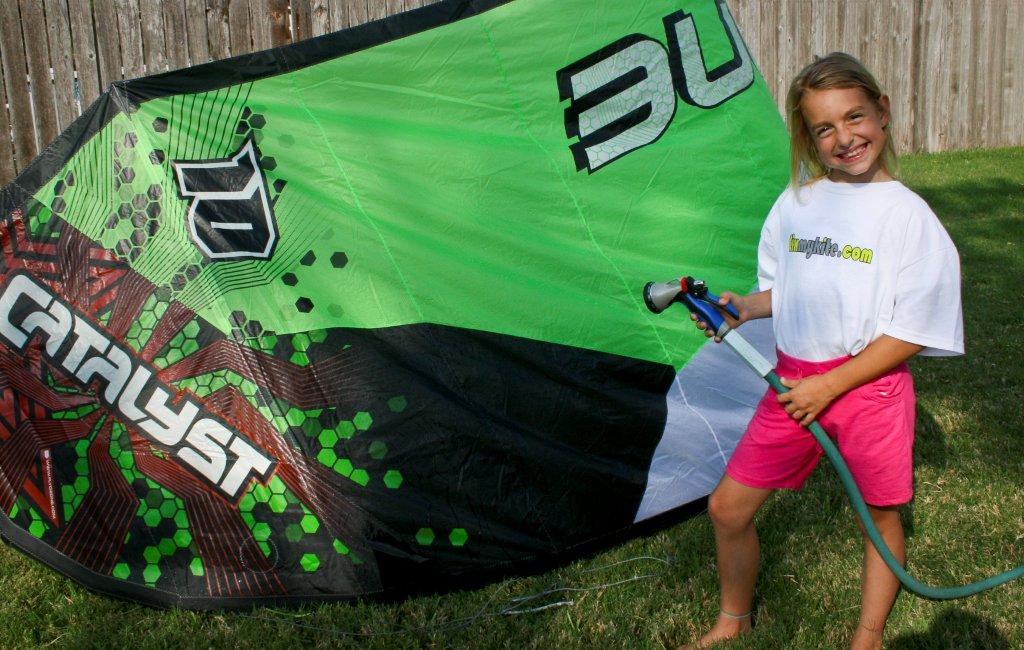By Jeff Howard/fixmykite.com
With over 10 years in the kite repair business, we at FixMyKite.com have seen it all. We’re often asked about what can be done to prolong the life of kites. With this in mind we’ve made a quick list below to help you keep your kite in your hands and not in ours!

1. Regular checks and maintenance: Once in awhile take your kite out, inflate it out of the wind, and inspect it carefully for small tears and rips. If the leading edge has any slices or questionable areas, get them fix correctly ASAP. On the canopy, small tears and cuts can be cleaned and repaired using rip-stop repair tape. Check your line connection points and replace them if they show any wear. Most major repairs happen from something small that turns big after a hard crash.
2. Cleaning: This step is one that can be done along with #1. Inflate your kite and clean it with fresh water, but make sure to never use a high pressure hose. Lightly rinse off the canopy, making sure to clean out the sand and grit that collects between where the canopy attaches to the struts and leading edge. After cleaning, allow the kite to dry completely out of direct sun light. If you deflate your kite completely after every use make sure to shake out as much grit and sand before storing. Any grit left in the kite when packed up basically turns into sandpaper when stored in the bag. Especially if you pile your stuff in the car, this can do serious damage.
3. UV exposure: This is one of the worst things that will damage your kite over time. The rule here is simple and sweet. When taking a long break off the water or when you’re done riding, deflate the leading edge and store your kite. The less sun time your kite gets when you’re not on the water, the more kite time you get with it on the water.
 4. Trailing edge fluttering: This one can be cured with the same way as #3. When leaving your kite on the beach nose into the wind, the kite can flutter and cause the trailing edge material to break down. This can result in major loss of performance as well as decreased porosity of the cloth, so when not in use store your kite correctly.
4. Trailing edge fluttering: This one can be cured with the same way as #3. When leaving your kite on the beach nose into the wind, the kite can flutter and cause the trailing edge material to break down. This can result in major loss of performance as well as decreased porosity of the cloth, so when not in use store your kite correctly.
5. Storing struts inflated: If you store your kite with the struts inflated for any prolonged amount of time, simply decrease the pressure in each strut to take the load off the seams and reduce stretching.
6. Color Fading: The rip-stop cloth used on all kites is not very color fast, meaning if left wet when stored the colors can fade into each other. This will not in anyway affect performance, but can make a kite have some ugly blotches. Just make sure to never leave your kite stored wet for any long period of time. Allow kite to dry out of direct sunlight before storing.
If you follow the above tips and suggestions your kite will last longer and keep you riding for years to come, but if you ever need help on anything repair related get in touch and we’ll make sure to get you back in the air with repairs guaranteed for life.


